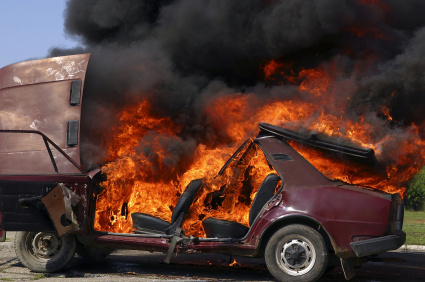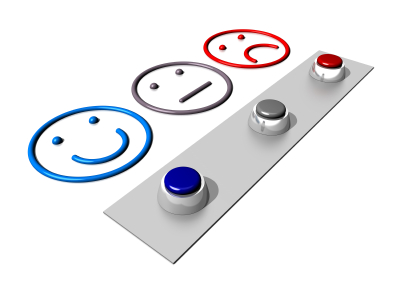What indemnification is, how it works and how to recognize exclusions and policy language that may lessen its impact.

Indemnification is how this loss can be compensated.
Like any other professional field, insurance is full of terms that may be unfamiliar to the outsider. One of these is “indemnification.”
Aside from being a mouthful, what is indemnification? Well, it’s a very important insurance concept which deserves a closer look.
What is Indemnification?
Indemnification is a central concept of insurance in general, not just auto insurance. It’s a term that comes up in every form of insurance, be it homeowner’s, renter’s, life, commercial liability or what have you. Indemnification is, in the recent words of a major carrier, the means insurance companies use to “get you back to where you belong.”
The concept is simple: by definition insurance should replace or otherwise pay for exactly what you lost. There should neither be profit nor loss in an insurance claim. That’s the theory, anyway.
How Indemnification Works
Say you’re in an auto accident and the other driver is found at fault. For the sake of simplicity (and because we like you) we’ll say that you weren’t injured, but your car was totaled. We’ll also assume the other driver had adequate liability coverage on his vehicle.
Depending on the policy and your preference you may be able to do one of two things: get a new car comparable to the one you had, or take a cash payment equal to the value of your car at the time of loss. Either way, the insurance company indemnifies you for your loss.
In another example, assume you have full coverage on your vehicle and you accidentally hit a tree. The car isn’t totaled, but there is $3,000 worth of body work needed. After your pay your $500 deductible, the insurance company picks up the remaining $2,500. While the deductible isn’t covered per the terms of your insurance contract, the rest is. That $2,500 claim payment is indemnification for your loss. You would profit from any further payment, but lose out from any less.
Indemnification isn’t automatic. Your claim must go through the proper channels and be investigated by a claims adjuster, who determines the amount of loss and what the insurance company is responsible for. If you disagree with the amount, you can hire a third party adjuster to take another look, or in extreme cases take the insurance company to arbitration or court.
Pitfalls of Indemnification
One should bear in mind indemnification does not take into account exclusions such as depreciation. It is very important to know if an item is covered for “replacement cost” or “actual cash value.” If the latter, you’ll only be covered for what the item was worth at the time of loss, which may or may not be enough to replace it.
Aftermarket accessories on separate auto inland marine policies are often covered at actual cash value, for example. Many commercial policies also make wide use of actual cash value clauses in their contracts. Ask your agent to be sure.
What indemnification is, how it works and how to recognize exclusions and policy language that may lessen its impact.
Like any other professional field, insurance is full of terms that may be unfamiliar to the outsider. One of these is “indemnification.” Aside from being a mouthful, what is indemnification? Well, it’s a very important insurance concept which deserves a closer look.
What is Indemnification?
Indemnification is a central concept of insurance in general, not just auto insurance. It’s a term that comes up in every form of insurance, be it homeowner’s, renter’s, life, commercial liability or what have you. Indemnification is, in the recent words of a major carrier, the means insurance companies use to “get you back to where you belong.”
The concept is simple: by definition insurance should replace or otherwise pay for exactly what you lost. There should neither be profit nor loss in an insurance claim. That’s the theory, anyway.
How Indemnification Works
Say you’re in an auto accident and the other driver is found at fault. For the sake of simplicity (and because we like you) we’ll say that you weren’t injured, but your car was totaled. We’ll also assume the other driver had adequate liability coverage on his vehicle. Depending on the policy and your preference you may be able to do one of two things: get a new car comparable to the one you had, or take a cash payment equal to the value of your car at the time of loss. Either way, the insurance company indemnifies you for your loss.
In another example, assume you have full coverage on your vehicle and you accidentally hit a tree. The car isn’t totaled, but there is $3,000 worth of body work needed. After your pay your $500 deductible, the insurance company picks up the remaining $2,500. While the deductible isn’t covered per the terms of your insurance contract, the rest is. That $2,500 claim payment is indemnification for your loss. You would profit from any further payment, but lose out from any less.
Indemnification isn’t automatic. Your claim must go through the proper channels and be investigated by a claims adjuster, who determines the amount of loss and what the insurance company is responsible for. If you disagree with the amount, you can hire a third party adjuster to take another look, or in extreme cases take the insurance company to arbitration or court.
Pitfalls of Indemnification
One should bear in mind indemnification does not take into account exclusions such as depreciation. It is very important to know if an item is covered for “replacement cost” or “actual cash value.” If the latter, you’ll only be covered for what the item was worth at the time of loss, which may or may not be enough to replace it. Aftermarket accessories on separate auto inland marine policies are often covered at actual cash value, for example. Many commercial policies also make wide use of actual cash value clauses in their contracts. Ask your agent to be sure.




